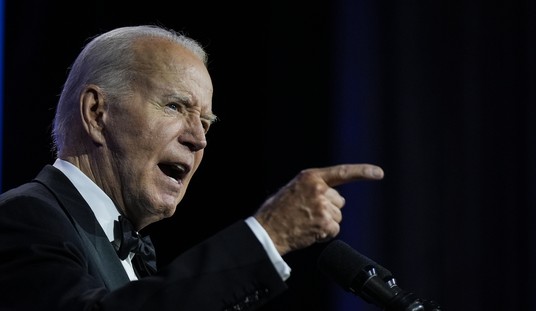The Republican race is heading into a critical juncture. Rick Santorum has emerged as Mitt Romney’s main challenger. To convince the followers of Newt Gingrich that their man’s campaign is essentially over, Santorum will have to finish well ahead of Newt in the upcoming contests over the next few weeks in Michigan, Arizona, Washington, and Ohio and then hope for a Gingrich collapse in the South.
College sports fans know all about the Big Ten rivalry between the University of Michigan and the Ohio State University. Now these two critical Midwestern industrial states, voting a week apart, will likely set the tone for the middle part of this GOP fight. Both of these states are a good national microcosm with struggling urban industry, prosperous suburbs, and the traditional Republican farm vote. They both even have a few transplanted Southerners. Their mixes of Catholics, Jews, and Protestants are close to the national average.
Romney was sufficiently concerned about both states to launch a multi-million dollar blitz of both positive and negative ads. Late polls show Romney inching ahead in Michigan while Santorum is surging ahead in Ohio. If Romney wins both of them, he is going to become the overwhelming favorite going forward. But if Santorum or (much less likely) Gingrich can score the upset in Ohio, it would most likely prolong the race until June.
Michigan votes first on Feb. 28 and is probably easier to predict due to the facts that Romney grew up there when his father was governor and won it in 2008. The Wolverine State was settled mostly by migrants from the Northeast and has a well-deserved reputation for social liberalism on issues like civil rights, electing moderate establishment Republicans like William Milliken and George Romney, Mitt’s father. The current GOP governor, Rick Snyder, is a socially liberal high-tech businessman (elected on the slogan “He’s one tough nerd”) and just endorsed Mitt. After becoming the home base of the auto industry, Michigan went through a 50-year boom from 1920 to 1970, which ended badly with the Arab oil embargo of 1973 that caused Americans to look for more fuel-efficient imported cars. Since then, the Detroit area has steadily lost population. In national politics, Michigan is “light blue,” going Democrat for president five straight times, but not by New York-style margins. At the local level, both parties are competitive.
About 40% of Republican voters are in the suburbs of Detroit with another 20% in the smaller metro areas of northern and western Michigan. (Virtually no GOP votes come out of Detroit: Obama received 97% of all votes in Motown in 2008.) The remaining 40% comes from rural Michigan, though obviously a surge in turnout in rural Michigan for Santorum could shift the balance. Based on early polls and previous voting patterns, look for Romney to have the edge in the metro areas and Santorum to do well in the small towns of “outstate” Michigan. Santorum’s strengths with farmers could give him at least one-fourth of the Michigan delegates. If Santorum is going to mount a charge in the Wolverine State, he’ll have to do so with blue-collar voters in the suburbs.
Oakland County is wealthy and mostly white-collar; Romney will almost surely win there. But just north of Detroit is Macomb County, to where many white workers moved out of Detroit, and is home to the famous “Reagan Democrats.” Santorum will not have the option of attracting blue-collar Democrats because this primary is open only to registered Republicans. But if some of these well-paid workers have switched parties, they will be the key to Santorum’s hopes. Watch the Wayne County suburbs and Macomb to see if any Santorum trend develops on Feb. 28. Since there are more white-collar suburban Republicans in Michigan than blue-collar ones, Romney looks good on paper. The guess here is that Romney’s home state ties and the historic strength of moderate Republicans give Mitt a win here (again). But a Romney win here will be less significant because it’s expected.
Ohio is both more complicated and difficult to predict. The Buckeye State was settled by Yankees north of Columbus and by Southerners & Border South migrants below that. (Cincinnati is a bit of an exception with large German, Italian, and Irish Catholic populations.) The industrial cities (Cleveland, Youngstown, Toledo, etc.) along Rt. 80 are traditionally Democratic cities that have more in common with Chicago, Pittsburgh, or Detroit than Columbus or Cincinnati. On the other hand, Cincinnati and especially Columbus are more white-collar. (The great NFL rivalry between the Cincinnati Bengals and Cleveland Browns applies to Ohio politics as well.) To add to the state’s complexity, the southeastern part of the state along the Ohio River is more like Appalachia than Cleveland. The Cincinnati, Dayton and Columbus areas all have a fair amount of migrants who came up from Kentucky and Tennessee to find work. They are Newt’s best hope for a good showing in Ohio.
Romney will be heavily favored in all suburbs to the north of Columbus. (As in Detroit, very few residents of industrial cities like Cleveland and Youngstown vote in GOP primaries.) Unlike Michigan, Democrats and independents can vote in the Ohio primary. So either Santorum or Newt will have a good chance to entice the conservative Democrats in southeast Ohio to cross over.
If Santorum wins rural voters north of I-70 and Newt wins them south of I-70, then Romney will once again skate through a divided opposition. For either conservative to win, they’ll need a unified rural vote. And either Gingrich or Santorum could make up for a loss in Michigan with a win in Arizona’s sweepstakes primary the same day, although Mitt currently owns a double-digit lead in the Grand Canyon State. (Then Romney would suffer the ironic fate of winning more votes on Feb. 28, but earning fewer delegates.)
Ohio has more rural voters than Michigan (almost half of all Republicans in the Buckeye State) and also slightly more evangelicals, which should boost Santorum since those are exactly the kind of voters he’s been winning. Another piece of good news for Santorum: at least 15% of the Republican turnout comes from rural German Catholics in the northwest part of the state who often vote on “values” issues. A huge turnout from these German Catholics for a gay marriage referendum in 2004 helped tip the balance in Ohio and re-elect George W. Bush.
Losing Michigan would be disastrous for Romney, a sign of a true meltdown. It will obviously be a good week for Romney if he wins both states. But win or lose, it will also likely be a pretty good week for Santorum, too. Neither state is winner-take-all, so he will get about 25% of the delegates, mainly from rural votes. For Santorum to get the great news of winning Ohio, watch both the German Catholic vote and those living south of Columbus. And if Gingrich can somehow rise from the dead for the third time, this race might go all the way to the floor of the GOP convention.









Join the conversation as a VIP Member